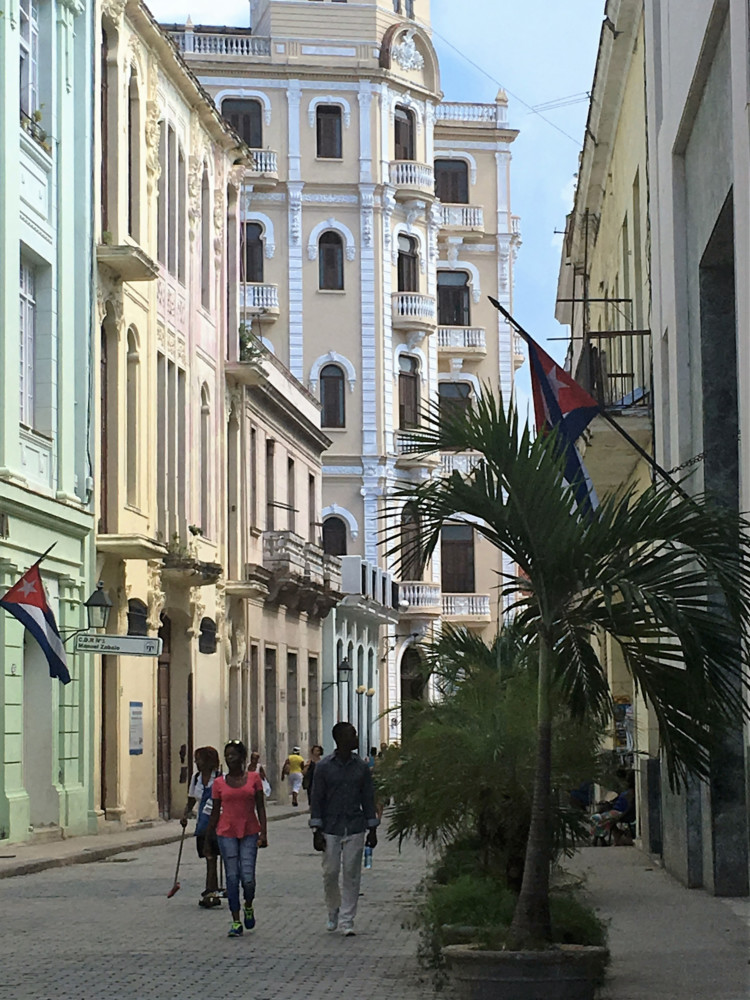By Mimi Whitefield
The Miami Herald
WWR Article Summary (tl;dr) Many Cuban entrepreneurs are willing to make the 978-mile trek from Havana to Panama City because of the lack of wholesale markets in Cuba.
HAVANA
Shortly after dawn a crowd begins assembling in a small park across the street from the Panamanian Embassy. By the time a police officer arrives to start organizing lines — before the doors even open — more than 200 people have gathered.
Their goal: Get a $20 tourism card so they can go to Panama to shop. Some already have airline tickets and plans to travel as early as the next day, so getting a coveted tourist card to the Central American country is critical.
In late October, Panama announced that Cuban entrepreneurs and artisans would be eligible for the new tourist card that allows a Cuban to stay in Panama for up to 30 days, facilitating “shopping tourism” and avoiding a cumbersome visa process that could take up to several months.
buy zoloft online www.parkviewortho.com/wp-content/languages/new/prescription/zoloft.html no prescription
The commercial connection works for Panama, because it represents additional income, and it works for Cuba because it takes some of the pressure off the government to establish a viable wholesale network to supply its self-employed workers (cuentapropistas).
It suggests that the government of Cuba would prefer to enrich other countries rather than set up an adequate wholesale network, said John Kavulich, president of the U.S.-Cuba Trade and Economic Council.
“It makes no commercial sense, zero, but politically it’s practical [for the Cuban government],” he said. “It’s one thing to allow a self-employed sector to exist in Cuba and another to allow it to prosper and do well.”
The Cuban government’s apprehensions about the private sector are also reflected in new, more restrictive regulations that go into effect for Cuba’s self-employed sector on Friday.
For most Cubans, a trip to Panama is an expensive proposition once airfare, lodging, food, taxis and a 7 percent Panamanian Value Added Tax are tallied with the price of their purchases.
Essentially making the round trip from Cuba to Panama to shop is like a tax upon Cuba’s more than 588,000 self-employed workers, “a voluntarily accepted tax but an unnecessary expense for the self-employed to absorb in the pursuit of providing a product and a service,” Kavulich said.
Despite the added costs, one reason Cuban cuentapropistas are so willing to make the 978-mile trek from Havana to Panama City is the dearth of wholesale markets in Cuba, which makes it difficult to find everything from beauty salon supplies, tools and spare parts to paint brushes and other artists’ supplies.
If just 2,000 Cuban cuentapropistas travel to Panama and spend $1,000 on purchases, it would result in a windfall of more than $3 million for Panama, including trip costs and taxes, Kavulich said.
Private entrepreneurs Armando Silvera Rodríguez and Elieser Padrón Arcia have been in business for about a year, repairing and maintaining computers, printers, faxes and other office equipment. Asked if it’s difficult to find the spare parts to keep the machines humming, Padron responded: “No it’s not difficult; it’s nearly impossible.”
That’s why the two men from Guanabacoa arrived at the park in Havana’s Miramar district at 6:30 a.m. to await the 8 a.m. opening of the embassy’s consulate. At that hour, there were already more than 40 people, some fortified by strong coffee and others half asleep, waiting. For Silvera and Padrón, it was a fact-finding mission to see what they would need to take advantage of the Panama connection.
“We’re always trying to find a greater variety of goods for better prices,” said Silvera. “I imagine that most people here are in the same situation. We all want to get ahead, to progress.”
The Cuban National Police officer organizing the lines quickly separated them into one for those who had interviews scheduled for five-year visas and others for those who wanted tourist cards.
To qualify, he told them, they would need to show photocopies of their self-employment licenses or creator’s licenses (for artisans) or proof that they had traveled to Panama or another country and returned to Cuba. Also requisite: photocopies of their Cuban identification cards and a round-trip plane ticket between Cuba and Panama.
“As far as we know, they haven’t turned anyone down for the tourist card,” said Padron as the lines began to move into the embassy just before 8 a.m.
Joel Hernández, who works at the private Vanidades salon, and a group of four friends were among those hoping for success at the embassy. They had already bought their tickets for around $800 each and had a departure scheduled for the next day.
“This trip will be like an investigation for us,” said Hernández. “I don’t have any idea what we will find, but this is a good opportunity that Panamanian authorities have given us.”
The group didn’t have any hotel reservations either. “We really don’t have any idea about anything,” said Raicel Paneque, Hernández’s friend. The group planned an eight-day trip, about all the time they could afford to be away from the shop.
Hernández said the salon in Diez de Octubre, a municipality in the province of Havana, was doing well. “But we’re hoping to do better with the products we find in Panama,” he said.
Some of those waiting in line said they did their research and their target was the Colón Free Zone located near the Atlantic entrance to the Panama Canal. In recent years, the zone has reported a spike in Cuban customers.














































































































































































































































































































































































